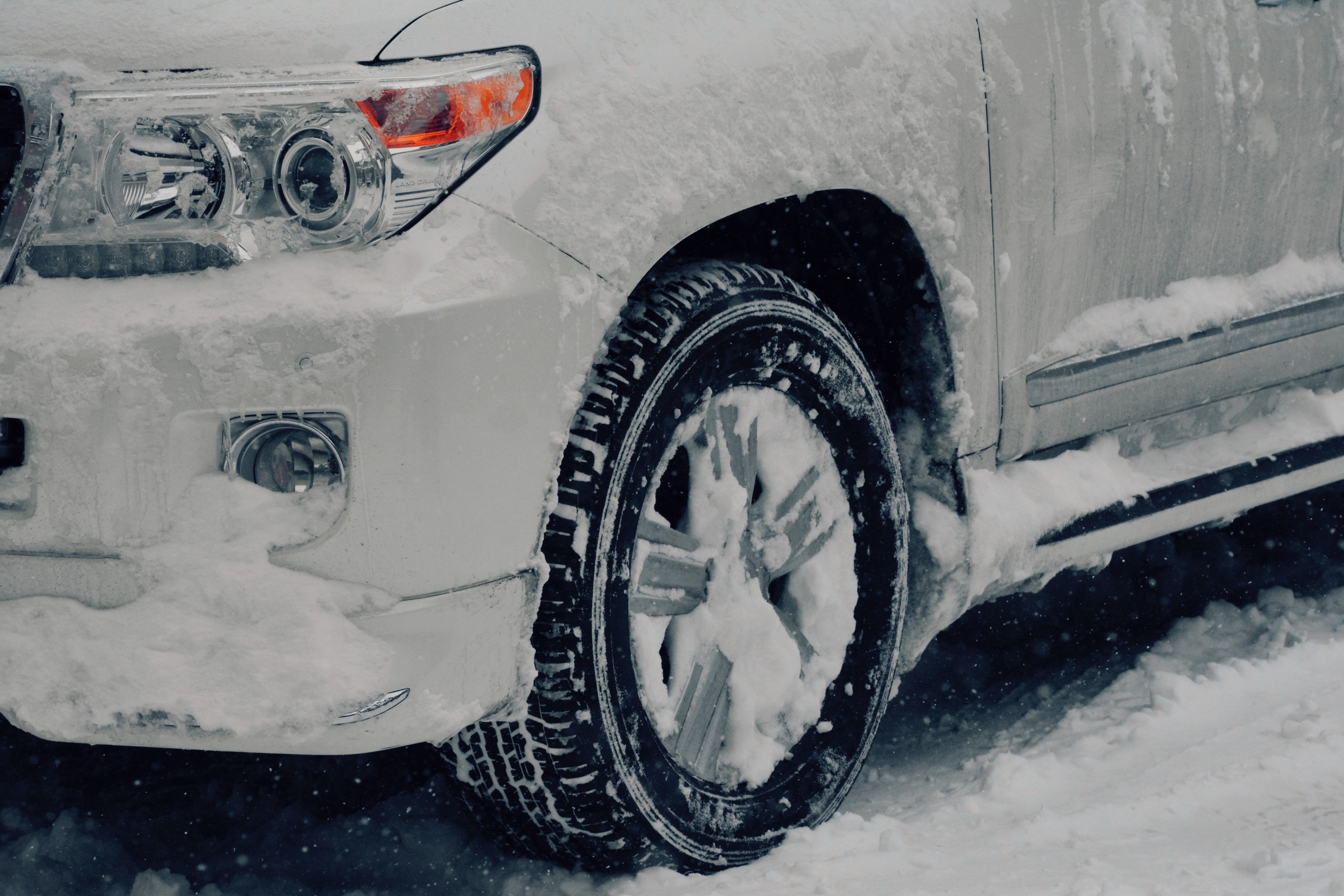
With increased road haulage and commercial vehicle usage during the festive season, having safe and correctly maintained tyres is essential for the safety of drivers and other road users. It’s also a legal and insurance requirement to keep your vehicle in a roadworthy condition.
The winter months can wreak havoc on your tyres. The increased rainfall and temperatures averaging around 3°C in winter can make driving particularly hazardous with steering, acceleration and braking all becoming more difficult. Even cold, damp conditions can increase stopping distances and reduce tyre grip when going around corners.
To help prevent accidents and keep your motor trade insurance or fleet insurance premiums down, we take a look at how you can adjust your driving style, maintain correct pressure and tread, and what tyre alternatives may help your vehicle or fleet through the winter months.
TyreSafe, the independent road safety charity, states that the first and most important element to ensure tyre safety is to carry out regular checks. While various tyre types are available, they will need to be in good condition and at the right pressure to perform at their best throughout the colder months ahead.
Check on Your Tyres
Taking the time to inspect your tyres is especially important during the winter. Pay special attention to the amount of tread remaining on your tyres and replace your tyres before they reach the legal limit.
TyreSafe recommends drivers check their tyres at least once a month (more often for delivery drivers and hauliers) and before long journeys. Your tyres are the only contact your vehicle has with the road surface, when they wear down it can affect how quickly a vehicle can brake, change direction and clear water from the road surface to avoid aquaplaning.
The legal minimum depth limit for tyre tread is 1.6mm across the central three-quarters of the tyre and this must be consistent all the way around the circumference. However, to be assured of top performance, it’s recommended to keep the tread at around 3mm.
Recent tests have shown that once tyres are below 3mm tread, stopping distances increase dramatically. The difference in wet braking distance between a tyre worn to 3mm and one at 1.6mm can be as much as 44%. Less tread depth in wet conditions means less water is able to be shifted from the road surface, which increases the risk of aquaplaning.
If you are caught with ‘bald’ tyres below the legal tread limit, you may be fined £2,500 per tyre and receive penalty points on your licence. In addition, you may not be covered on your motor trade insurance or fleet insurance policy as your vehicle is deemed not roadworthy.
To determine the tread depth of your tyres, use a 20p piece within the grooves. Its border is exactly 1.6mm. If you can see the border at all, you should get your tyres checked by a tyre fitting expert.
The Right Pressure
Tyre pressure should be checked at least once a month or before heavy loading or long journeys. The vehicle’s handbook will have details about vehicle loading and the necessary adjustments to tyre pressure.
Always check pressure when the tyres are cold (that means travelling less than two miles) against the vehicle manufacturers’ recommended levels. Over- or under-inflating tyres is likely to seriously impair their performance, according to The Royal Society for the Prevention of Accidents (RoSPA).
Over-inflation increases overall tyre diameter, decreasing the amount of tread in contact with the road, sidewall flexibility and road-adhesion. The flexibility of the sidewall is needed to enhance vehicle stability and to provide a more comfortable ride, allowing for longer driving.
Under-inflating your tyres increases ‘rolling resistance’, meaning you will need more fuel and energy to push your vehicle along and therefore makes your driving less economical. You are also more likely to suffer from a blowout, causing lengthy breakdown waits or, at worse, causing a serious accident. You will also find braking, cornering or acceleration is impaired, especially in wet weather.
Both under- and over-inflating your tyres can reduce the longevity of your tyre and can cause them to fail much sooner than expected.
Tyre Ageing
It could soon be a criminal offence for buses, coaches, lorries, heavy trailers and minibuses to run on tyres more than 10 years old. The Department for Transport is consulting on proposals that should come into force in 2020. Currently, this doesn’t include commercial vans, taxis and mini cabs, though the rules may be extended.
RoSPA points out that tyres do deteriorate with age, which increases the risk of tyre failure. Longevity can depend on storage conditions, usage, road conditions, maintenance and the driver’s driving style.
Tyre ageing is particularly prevalent for people with vehicles that may be stored for significant periods of time, especially if you carry out seasonal work, such as ice cream vans, classic cars, caravans, food vans and trailers.
The rubber compounds used in tyres contain anti-oxidising chemicals to help slow down the ageing process. These chemicals are squeezed into the rubber when tyres are in use. When a vehicle isn’t being driven, the agents stop working and this speeds up the tyre’s ageing.
So, tread is not the only element of wear on a tyre. Before you take you vehicle or trailer out, inspect it for signs of aging including cracking/crazing on the side wall of the tyre, distortion of tyre tread and defamation of the carcass of the tyre.
Winter Tyres
Winter tyres are specifically designed to work well in cold, wet conditions. Standard summer tyres lose their flexibility when temperatures drop below 7°C as the tread compound begins to harden, providing less grip. Winter weather tyres are made from a different rubber compound to stop them hardening. Although an additional cost, fitting winter tyres might even help your motor trade insurance policy or fleet insurance premiums by protecting your no claims bonus.